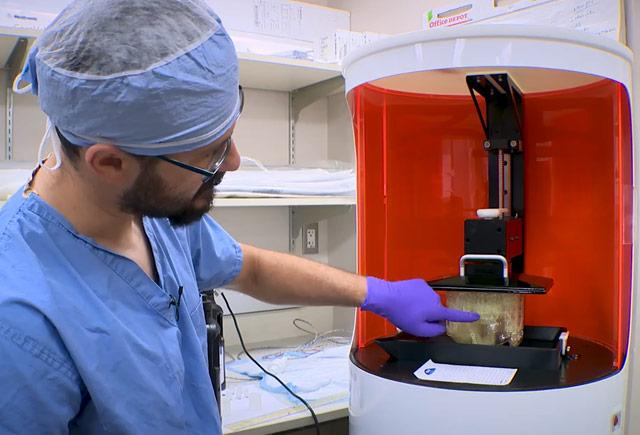
3D printing puts hearts in cardiologists' hands
Exact replicas of patients' organs lets doctors figure out their approach and what devices they'll need -- before showtime.
A study published this week reflects that more patients than ever who need aortic-valve heart repair are doing so via a catheter instead of open surgery.
To see one of these catheter procedures is to marvel at the cardiologist’s ability to take cues from a real-time scan to position a replacement valve or other device in the exact right spot. What guides them is akin to a fuzzy black-and-white TV image. (Millennials won’t understand that reference, but go with me here.) Anyway, there’s no denying catheterization’s advantages: It appears to be as effective as surgery, patients' recovery times are far shorter, and costs are less. And it’s a option for people who need a repair but can’t undergo surgery due to other health concerns.
3-D printing is one recent advance that helps UW Medicine cardiologists plan these procedures. At the Center for Cardiovascular Innovation, scientist Dmitry Levin prints out 3-D replicas of patients’ hearts, which gives practitioners like Mark Reisman a chance to plan his approach to a catheter repair, to see which valve or other device will fit the patient’s vessel exactly. It eliminates the off-the-shelf selection and cuts down the time a patient is under anesthesia.
In his basement lab, Levin takes high resolution CT scans of patients’ hearts and, with software, transforms them into perfect 3-D models of flexible plastic. He can omit a section of cardiac wall so it's easier to see inside the model. It takes one to two hours for a heart to be printed, one millimeter of depth at a time, but the benefits of the investment are clear.
“By having the 3-D hearts, we can literally practice or … better understand what to anticipate within the context of the procedure,” Reisman said. “It allows you to hold (the replica) in your hand.. I think it will make procedures safer and more refined.”
Watch (below) or download a video segment about UW Medicine’s use of 3-D printed heart models.
Brian Donohue - bdonohue@uw.edu, 206.543.7856
For details about UW Medicine, please visit https://uwmedicine.org/about.